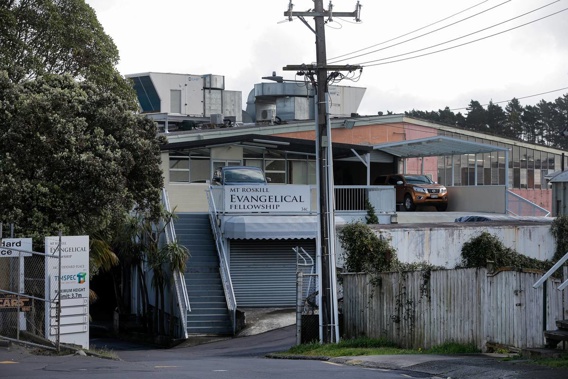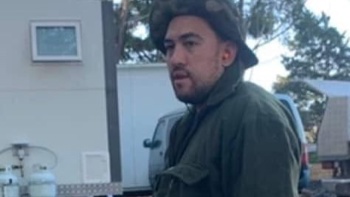
What does the Mt Roskill "mini cluster" mean for Auckland's - and New Zealand's - Covid-19 risk?
Whether we see case numbers trend sharply upward, downward, or continue in a gradually falling trickle for weeks is unclear.
Health Minister Chris Hipkins was upbeat when speaking to media today.
"We are likely to see more positive cases from this new subcluster but it would appear that we have managed to get it early - which means, that at this point, we are not seeing any other cases popping up associated with the subcluster that aren't already identified contacts."
But when modellers from Te Punaha Matatini reviewed the situation this morning, there wasn't yet enough data to make any firm estimates.
"We have looked at the numbers in the cases and come to the conclusion that it is really too soon to say," modeller and University of Canterbury mathematician Professor Michael Plank said.
"It comes down to a combination of not enough time at level two, and small numbers of cases."
Here's what we know
The Auckland cluster now has 173 cases, of which more than 40 are now connected to a "mini cluster" surrounding the Mt Roskill Evangelical Fellowship Church.
A sub-cluster within that is linked to a funeral on September 2 and visits to the household of the bereaved.
Two of today's four new cases were part of the sub-cluster, which now has 24 cases.
"As far as we can tell they were unaware they had been infected and were incubating and spreading the virus at the time," the Ministry of Health said in a statement.
There are also 101 close contacts associated with this sub-cluster.
The sub-cluster was the only extra tentacle connected to the church group, but it already includes a student from St Dominic's Catholic School, a Northern Express bus driver, and several other workplaces.
Discounting the cases connected to the Evangelical Fellowship Church, the number of community cases in the past eight days are: 0, 0, 1, 0, 1, 0, 1, 0, 2.
As at 8am today, labs had registered new tests for 64 per cent of the congregation - or 213 of the 332 people involved.
But, because Auckland remains in a generally open environment of level 2.5, it's tough for modellers to pinpoint the virus' all-important basic reproduction number - or the number of other people that one positive case can infect.
New Zealand's first lockdown pushed that number below one, putting the country on track to elimination.
Modellers can, however, talk general scenarios that Auckland might face.
A sharp upward trend?
Whether case numbers will start quickly climbing still comes back to whatever that reproduction number is, Plank said.
"If people are passing it on to more than one other person, it will trend upwards. It might move up slowly to start with, but that will get faster and faster over time, more than likely," he said.
"So that comes down to how quickly we are getting to them with contact tracing and, if we are contact tracing fast enough, keeping people isolated could be enough to stop them passing it onto more people.
"But if it doesn't happen quickly enough, the chances are, being at alert level 2, people may be moving around and not knowing they have the virus, because they may not be symptomatic yet."
As well as the fact there may be other "tentacles" we're not aware of, Plank said there was also "the lag" to consider - the average incubation period for Covid-19 typically lasted longer than a week.
"We have only been at level 2 for a week and a half, so it takes a week and a half to two weeks to start to see the cases come through in the reporting."
Added to that was the fact it also took time for people to be tested - and those tests to be processed and results to be passed to officials.
"And because we have had a few new cases popping up recently that weren't initially traced contacts - we've had the bus driver, for example, and obviously the school students - it seems like the tentacles have branched a little bit from this mini-cluster.
"It suggests we haven't quite gotten to the edges of it, and we are still one or two steps behind, which means there is still a danger it could take off again."
A sharp downward trend?
This was the least likely scenario, but chance was still a factor.
'"At this stage of an outbreak, with relatively small numbers of cases, a lot of it does discount down to pure luck.
"If we could imagine a world where the Mt Roskill mini-cluster didn't get initiated, we would be down to zero cases by now, so it is bad luck that this happened.
"But what happens next could come down to good or bad luck. Whether an infected person happened to take a bus, went to class with other students, or just went and did what people do on a day-to-day basis - all of that matters.
"Still, I wouldn't expect it to disappear completely over the next few days, given those few cases we have already.
A gradual wind-down?
"We might be more expecting this to rumble on potentially for a few more weeks," Plank said.
"But if we are unable to contain it, obviously there is also a danger that it might start to increase."
There was the particular risk the virus could work its way into a crowded school or workplace, which could lead to a large flare-up.
"But all of these things start off gradual - so even if it does start going up, don't expect it to do so rapidly.
"It might just peter along, and then go up very gradually - the nature of exponential growth is that it gets faster and faster over time.
"This is the situation we are trying to avoid."
Take your Radio, Podcasts and Music with you









